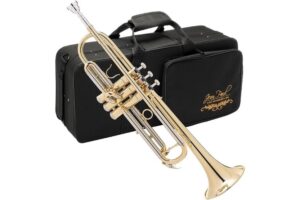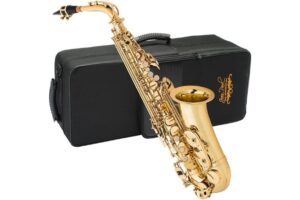You must have seen many guitarists playing their instruments left-handed. But you likely have not seen many cellists playing his or her cello left-handed. Are there left-handed cellos?
In general, there are no left-handed cellos. By their nature, cellos are not left or right hand oriented. There is really no need for these varieties, so they don’t exist.
Considering the position used in playing the cello, having it oriented left hand or right hand is not necessary. But as with many stringed instruments, you can set it up to be played by a left-handed cellist.
If you really think about it, lefties have an advantage if they play the cello in the standard way. When they use their dominant hand to press the strings on the neck, they will find it easier to produce the sound that they want.
This is advantageous at the start. However, it won’t really matter as you advance because playing the cello will make you more ambidextrous.
Read on and you will learn the reasons why the cello is never oriented to be right or left-handed, along with the other details related to this topic.
Also, we hope you find the links here useful. We may get a commission if you purchase something through a link on this page, so thank you!
Left-Handed Cello
A very basic thing that must be understood about cellos is that there are no left-handed cellos. They don’t exist because there is no need for them.
If you will look at the way the cello is played and the position the cellist takes to play it, orienting it in a specific way is not really necessary.
In buying a cello, its orientation does not in any way come into play. Factors such as the artistry and the quality of the materials used are the most critical elements that should be considered, not for a right-handed or a left-handed person.
You may have assumed that since guitars, ukuleles, and other stringed instruments have their respective left-hand versions, there would be a cello for the left hand. No, there are no such things as left-handed versions of the cello. In fact, the cello is very different from guitars.

Cellos Are Different from Other Stringed Instruments
Yes, there are many things that differentiate cellos from other stringed instruments, like guitars and ukuleles. Guitars are stringed instruments. Cellos are bowed stringed instruments.
Cellists use their bows to produce the sound from the cellos. They seldom pluck or strum their cellos, which are the usual ways guitarists produce sound from their guitars.
Guitarists press the strings on the fret boards on the neck of their guitars to produce the sounds. Cellists press the fingerboards on the neck of their cellos to produce the sounds. There are no frets in a cello, while there are 21 to 24 frets in standard guitars.
Cellists use a different approach to the fingerboard compared to the way guitarists approach the fret boards of their guitars. Different hand muscles and different hand shapes are used by a cellist compared to a guitarist.
Click here to see this WADA Cello Bow Grip Aid on Amazon.
Why There Are No Cellos for the Left-handed?
The points given above can explain why there is no need for cellos for the left-handed.
Nonetheless, there is a more logical reason why we should not think that there ought to be left-handed cello. In all the historical records of music, have you heard of a left-handed piano, a left-handed saxophone, or a left-handed trombone?
No, because they are just made that way. So, even if you are left-handed, you are expected to play these instruments, the standard or regular way. And so with the cello – there is only one standard way to play it – the regular or usual way – regardless of whether you are right-handed or left-handed.
But of course, if you choose to, you can set up a cello in a left-handed orientation so you can play it left-handedly.
However, this orientation and way of playing the instrument have some unwanted consequences, which include difficulty in producing certain sounds or pitches and difficulty in modifying the tuning elements.
Learning How to Play the Cello
Click here to see this Fantastic Finger Guide for Cellos on Amazon.
If you want to master how to play the cello, you must first dedicate and commit yourself to learning it. The cello is able to produce beautiful yet haunting tones that no other musical instrument can produce.
Your efforts will be duly rewarded when you are already able to create music that moves the spirits of your listeners.

The requirements that you need to fulfill initially are the same requirements that your right-handed friends have to fulfill. They are as follows:
1. Pick the Right Cello
You don’t have to search for a cello made for left-handed musicians. Also, there is no need to modify the standard cello to suit your left-hand orientation. The critical elements that you need to see in a cello that you will play on are the following:
- The cello should produce beautiful tones, especially the low tones. It is not encouraging to play a musical instrument that does not sound good.
- The cello should be just right for your body size. Cellos are available in various sizes. Choosing a cello not suited to your size will lead to neck and back injuries.
- The cello should be made of the best materials and craftsmanship that you can afford.
2. Undergo the Training Process
To be able to learn how to play the cello, you need to undergo the basic training process. It is assumed that you already have a fundamental knowledge of how to read music. This is very important since you can’t play decent cello music if you don’t know how to read musical sheets.
The training process typically includes performing exercises that will develop your muscle movements and dexterity of your fingers. These exercises are usually done on the cello to develop your muscles and fingers that you have never used before.
Even as a lefty, you will have to learn the fingering techniques required in playing the cello. However, being a lefty, you will learn them faster since your left hand is your dominant hand.
Learning the bowing techniques could be a little more difficult. But in the end, it really does not matter because your left hand and right hand as well as both your arms, will have to learn new things.
Be comforted with the thought that it is impossible to learn new things without encountering difficulties here and there.
3. Enroll in a Cello Beginner’s Class
The best way to grasp how to play the cello is to study under a legitimate cellist. You can learn how to play it by watching YouTube videos. But there is no other way to get important feedback from a real-life teacher.
There should be a music school in your local area, or it can be under a university’s school of music.
It would help if you got the right fundamentals to commit the usual mistakes that most musicians commit. And what better way to do this than in a formal music school setting.
One final note in this section: if you want to join a school orchestra and eventually play professionally, learning to play the cello the standard way is important.
That means your left hand on the fingerboard and your right hand holding the bow. Otherwise, you will only be playing by yourself.
Does a left-handed cello exist? No, they don’t. Cellos are neither left-handed nor right-handed because there’s no need for such due to the position you’ll play them. However, similar to other stringed instruments, you can also play it as a left-handed cellist would.
Lefties Have an Advantage When Learning to Play the Cello
Be happy because there is an advantage of being a lefty if you want to learn the cello. While you may experience difficulty at the start, especially with the bow’s use, you will have an easier and faster time learning the fingering techniques.
You will be using the fingers of your dominant head on the fingerboard, so you will learn to play the cello faster.
Left-hand dexterity, which you already have, plays a significant role in learning the cello faster. This is the greatest advantage you have over the regular right-hand newbies on the cello. Your command over your left hand and its dexterity are a great plus in learning this instrument.
The only part of you that needs training is your right hand. How to properly use the bow with your right hand may feel strange at the start. But even right-handed people have this problem too. You will get over the difficulty in due time.
You will have to do what right-handed people do if they want to learn the cello: stay focused, practice self-discipline, practice more often, and never give up. Mastering the cello is very difficult, but if you stick with it, you will soon be able to play it beautifully and confidently.
Why Do You Need to Learn Cello the Standard Way?
Click here to see this D’Addario J1010 Prelude Cello String Set on Amazon.
You need to learn it the regular way because if you don’t, you will not be taken seriously by other cellists and other musicians.
If you try to defend your right to do it your own way and if you keep on pushing it, you will only build up unnecessary resentment and stress in your musical environment.
Even if you are allowed to play in an orchestra, especially a symphony orchestra, you will stick out like a sore thumb. Playing in an orchestra is about group cohesion, unity, and organization.

Just one member of the orchestra not dressed in proper attire will give the group a bad reputation. What more if a cellist is positioned differently than his co-cellists?
The primary reason you need to learn the standard way of playing the cello is to enable you to play with others. Just imagine if you are sitting next to another cellist or a violinist and your bows run into each other each time you both need to play an upbow!
It’s Best to Play the Cello the Standard Way
If you insist, yes, you can play the cello left-handed. It is possible to set it up backward. But is that a good idea? Consider this:
The cello is not symmetrical. To make it symmetrical, you will have to make one from scratch or modify a standard cello heavily. It would help if you mirrored the fingerboard, the bass bar, and the soundpost. In other words, you have to reverse or make them backward.
Then you need to modify the scallop on the front face, where the tuners are attached. The whole idea is challenging to conceive and most likely very difficult to construct. And you still can’t ensure that it will make and produce the right musical tones that cellos are well-known for.
So, the best thing really is to learn to play the cello, the standard way, if you are left-handed.
How to Play the Cello If You Are Left-Handed?
Even if you are left-handed, you can produce beautiful and inspiring sounds on your cello. You don’t have to heavily modify the construction of a cello to orient it for the left-handed.
Many left-handed cellists admit that they have never seen a cellist play the cello in a left-handed way in all their years of playing the cello.
The cello need not be modified to suit left-handed musicians. It is just that way, just like the piano, the trombone, and other wind instruments.
Think about it: not all the cellists that you see playing in a symphony orchestra are right-handed. How to play the cello even if you are left-handed? Just play it the way right-handed cellists do it.
Check out our newest article: What We Know About Jenna Ortega and Her Cello Skills!
Conclusion: Left-Handed Cello
Is there a left-handed cello? By any stretch of the imagination, you cannot find a cello oriented for the left-handed. Because of their nature, cellos are not made to be left or right hand oriented.
There is no need for these variations, so they don’t exist. If you consider the position used in playing the cello, having it oriented left-hand or right-hand is unnecessary.
However, as with many stringed instruments, it is possible to build a special cello played by left-handed cellists. But there will be problems.
To summarize, all beginning cellists must learn discipline and perseverance when learning how to play the cello.
And as a left-handed cellist, you have the advantage because it’ll be easier for you to master fingering techniques. The only real challenge for you will be training your right hand in using the bow in the right manner.
Remember that learning all kinds of musical instruments is tough at first. So, you just got to keep on!
Related reading:
How Many Strings Does a Harp Have?













